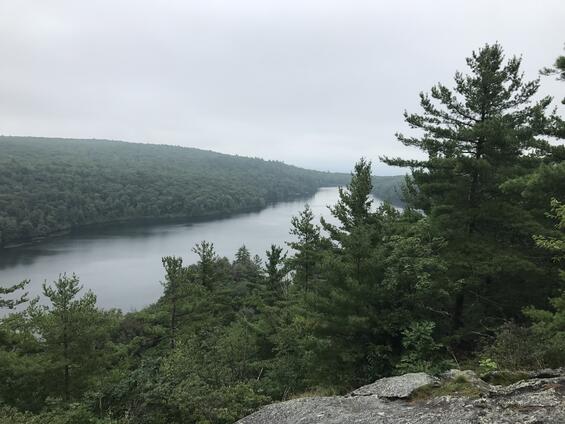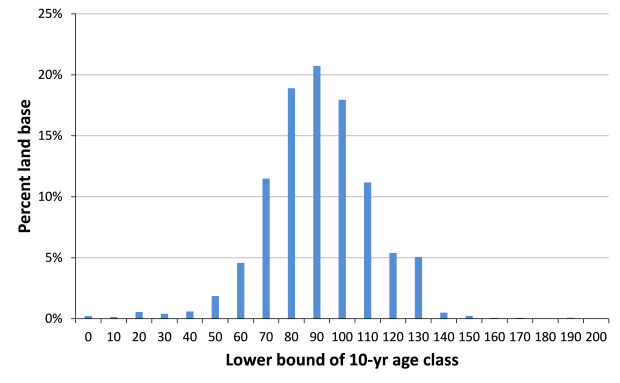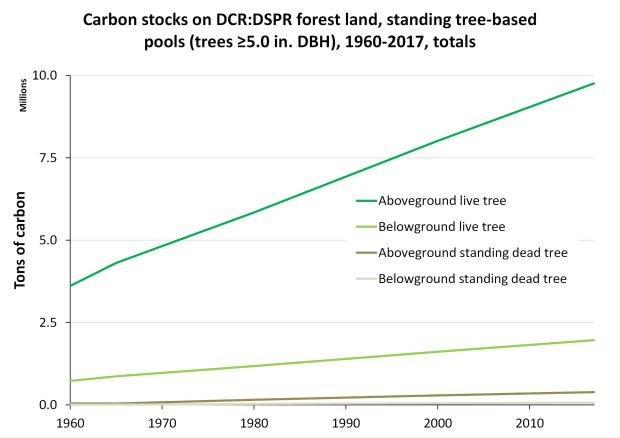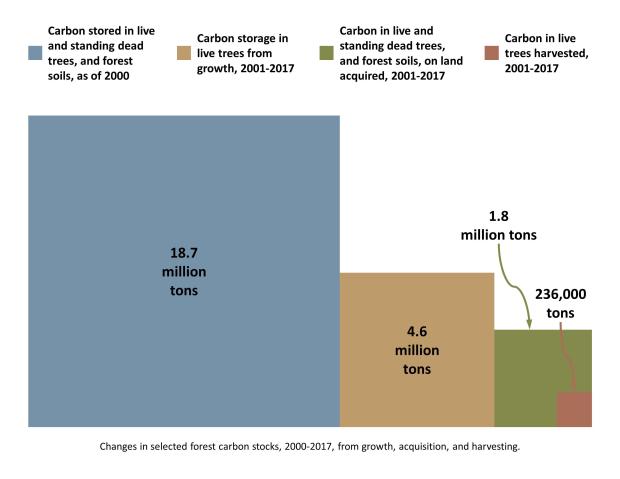It All Starts with Keeping Forests as Forests
Forests play one of the most significant roles in removing harmful carbon dioxide from the atmosphere, which also aids in curbing climate change. The Commonwealth has made it a priority to permanently protect forest land from development and keep forests as forests. The DCR alone has acquired around 116,000 acres of land in the last 60 years. In contrast since the early 1990s, 4,800 acres of forest land are permanently lost to development in Massachusetts each year. The State Parks and State Forests protected lands, which will remove and store carbon dioxide, must be carefully and continuously managed to ensure long term benefits.
Our approach to protecting and managing our forest carbon stocks for the future is similar to managing a financial stock portfolio; diverse investments that align with the current markets are designed to limit the impact of volatility in the market for long-term gains, not maximize returns for the short term. Simply said - a balanced approach.
“Managing our Massachusetts forests for diversity will produce long-term carbon benefits and create the resiliency required to mitigate climate change risks. ”
Getting the Most from Our Forests
Once protected from development, our mission expands to enhance the condition of those forest lands. In our vision for the long term, the DCR scientifically manages forests across all of Massachusetts and deliberately considers a variety of activities that range from passive to active management.
Passively managed forest lands, mainly classified as Reserves and Parklands, provide carbon storage and recreation and make up 60% of DCR's 315,000 acres of state-owned forests. The remaining 40% of those state-owned lands are classified as Woodlands that are actively managed for a variety of reasons or ecosystem services:
- diverse habitats
- water supply enhancement
- recreational opportunities like walking, hiking, or paths to scenic vistas
- carbon stock management
- production of sustainable wood products
Forest management on actively managed lands is designed to createareas of different sizes and ages of trees thus diversifying our carbon portfolio. Like a jigsaw puzzle, all the individual pieces work together to provide the overall picture.
Active Management and Carbon Storage
All of the DCR's forest management starts with data. Since 1960, the DCR has monitored forest growth and conditions on its land through a continuous forest inventory (CFI). Today there are 1,800 plots. Over this 60 year period, we have tracked the size and fate of 102,000 trees. The CFI system provides strategic data on the health, status, trends, and carbon stocks and fluxes of our forests.
Healthy, productive forests are diverse forests, meaning they have a mix of age and species. The DCR's current forest portfolio is not as well balanced as experts prefer with over 80% of the forest area composed of stands between 70 and 120 years old as shown below. While it is important to have older stands that hold large amounts of carbon, these carbon stocks are at risk from severe weather, diseases, and pests. A diverse forest includes younger stands that grow vigorously and rapidly accrue carbon along with older stands that store large amounts of carbon, creating a balance between short-term benefit and long-term gain.
As an added benefit, managing for diverse conditions locally and across the landscape allows for adaptation to a changing climate and provides a level of resiliency to events and issues attributed to climate change such as weather, fire, or invasive species.
Our Current Carbon Storage
The current accumulation of carbon in the DCR's state forests is 12.2 million tons of carbon in live and standing dead trees. Additionally carbon stocks have increased 7.8 million tons over the last 60 years, taking into account land acquired, forest growth, natural tree mortality, as well as tree removals. We would need to remove approximately 5.6 million passenger vehicles from the roadways to obtain the same positive carbon benefits of the current Bureau of Forestry's Forest Management program.
There has been a continual accrual of total carbon on the DCR's forest land since 1960. Not only has total carbon increased but carbon stocks per acre on the DCR's lands have nearly doubled as well.
DCR's practice of utilizing different forest management strategies - active management on some lands, passive management on other lands - not only provides that diverse carbon portfolio discussed above, it also ensures DCR can provide a variety of forest benefits to our Commonwealth and our neighboring states. The CFI data confirm that timber harvesting has a minimal impact on our overall carbon portfolio. In fact, carbon in trees harvested represents less than one-half of one percent of the total tree carbon stocks.
Carbon Budget for DCR-DSPR Properties 2000 - 2017
Key Findings
- DCR is a leader in conserving forests as forests which is paramount in sequestering carbon and reducing greenhouse gasses.
- DCR manages its lands passively and actively for many ecosystem services including carbon storage and the production of renewable wood products. Storage of carbon in the growth of live trees currently outpaces carbon removed in harvested live trees by 7.7 to 1.
- A diverse approach to the management of the DCR forest carbon portfolio can offer protection against sudden and catastrophic loss of live tree carbon stocks.



